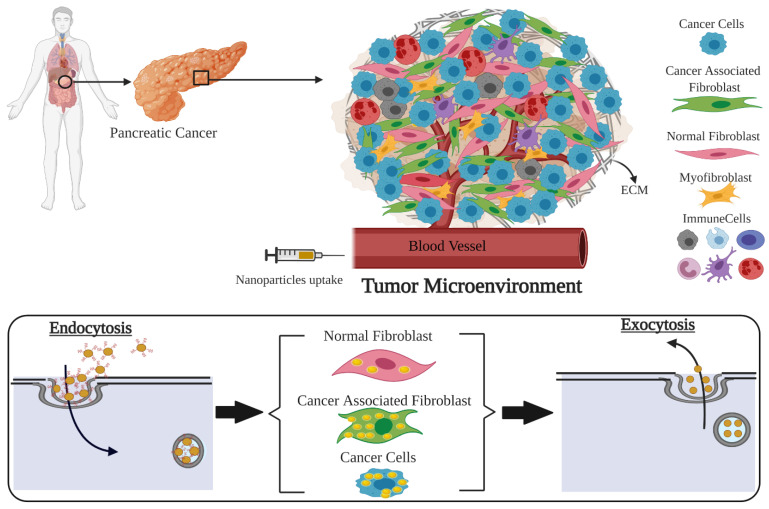Figure 1.
Exploring nano-bio interface in a tumor microenvironment (TME) of pancreatic origin. This schematic demonstrates the complexity of a TME and how nanotechnology can exploit the ability of different cell types to uptake different amounts of nanoparticles (NPs). NPs could be used as radiosensitizers or drug delivery carriers. TME consists of many types of cells. Upon the delivery of NPs into the different type of cells via the bloodstream, cancer cells and cancer associated fibroblasts (CAFs) uptake the highest number of NPs compared to normal cells. The surface-modified NPs enter the cells via endocytosis, and after a certain period of time, leave the cells via exocytosis. The window where cancer cells and CAFs retain the highest number of NPs could be used to deliver specified doses of ionizing radiation to reach a higher therapeutic index.

